RadMini/RadExpand Rear Rack installation guide
The RadMini rear rack allows a rider to carry gear, use pannier bags, and add accessories to the rear of the bike.
Follow the steps below to install a rear rack on a RadMini. This guide uses a RadMini 4, but the steps will be the same for a RadMini Step-Thru and RadExpand 5 models.
Tools needed:
- A 4 mm Allen wrench
- An 8 mm wrench
- A torque wrench with a 4 mm Allen bit
- Flat side cutters
- The RadMini rear rack kit from Rad Power Bikes
Hardware bolt head, style, and size may vary between models and require different tools. Use the appropriate head size and type of tool for your bolts. Ensure the tool is pressed firmly into the bolt head and turn slowly to prevent stripping.
- Get the bike ready for maintenance. Turn off the bike, remove the battery, and press and hold MODE to discharge remaining power.
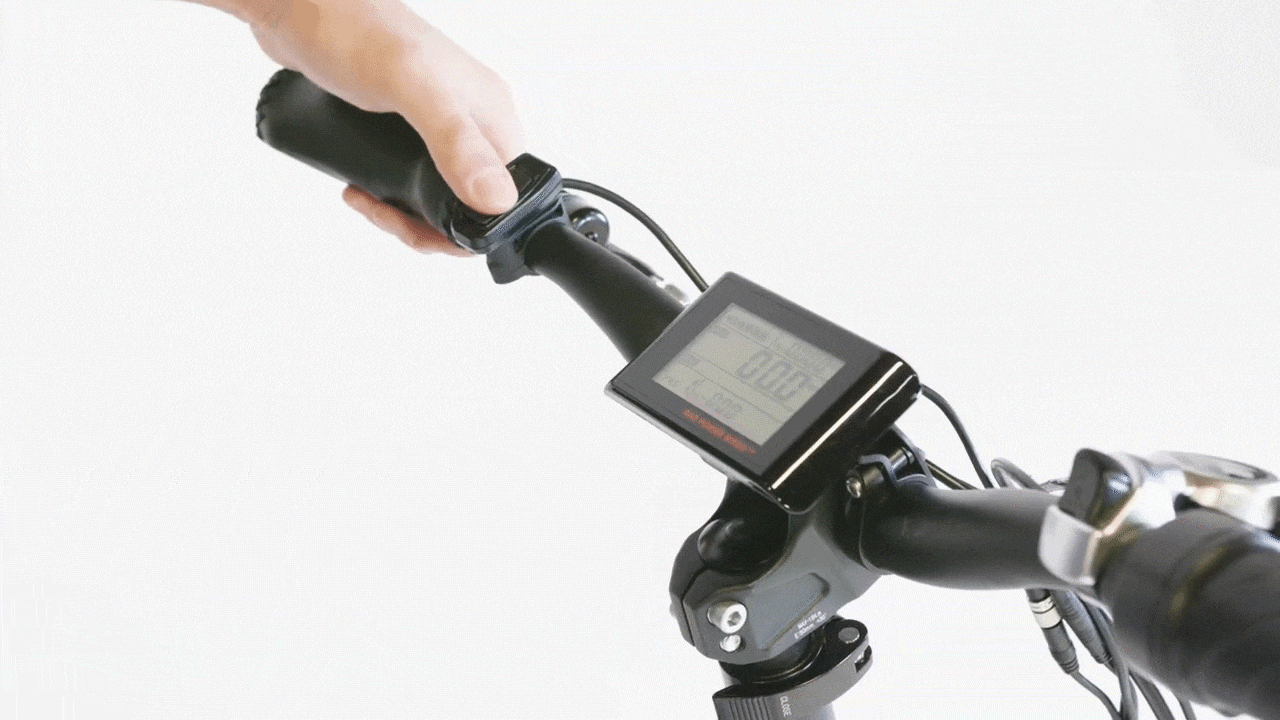
- Unplug the taillight connector. Trace the cable from the taillight to the connector. Snip zip ties as needed to create cable slack, and pull the connector directly apart, without twisting, to unplug.
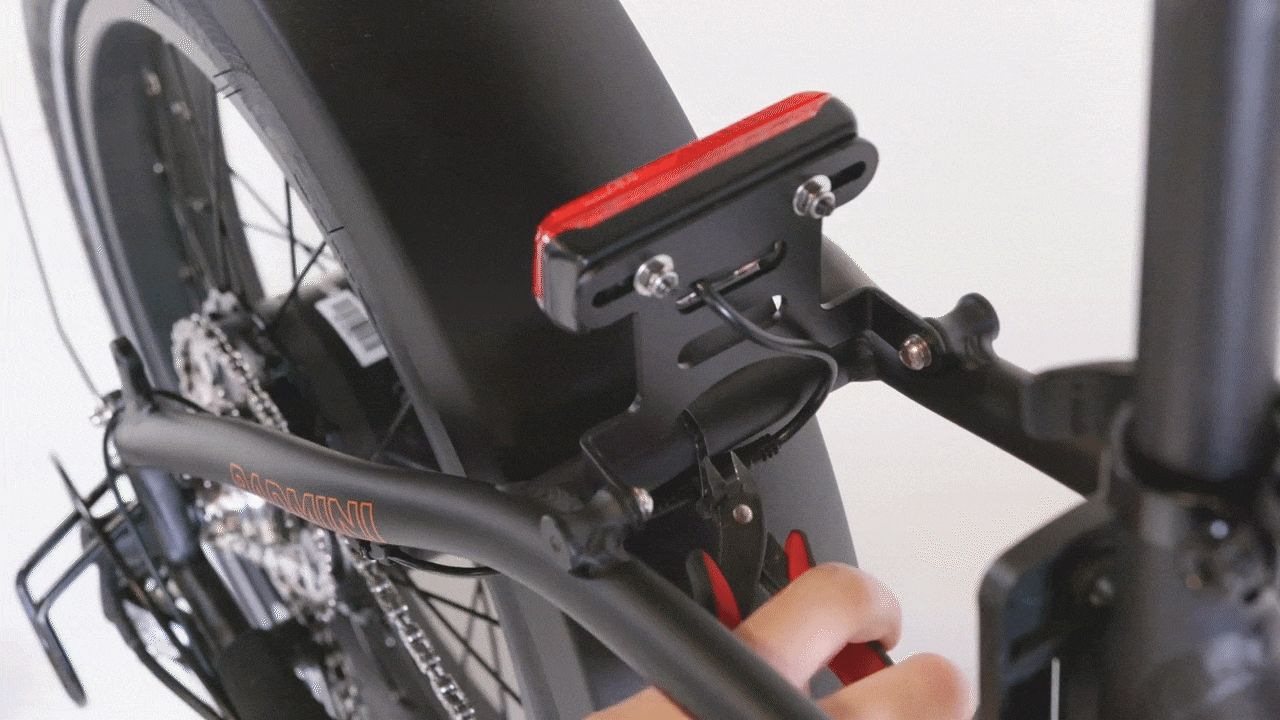
- Carefully snip the zip ties holding the cable to the cable guides to the seatstay. Allow the cable to hang out of the way for now.
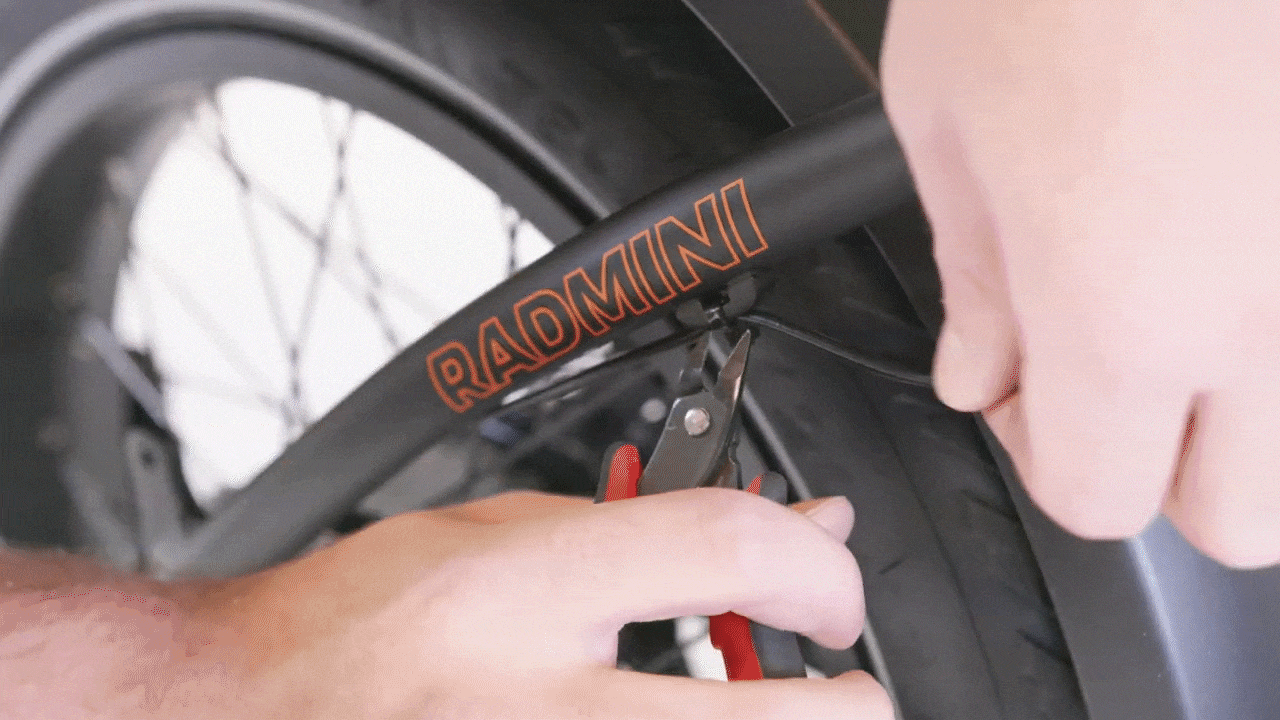
- Remove the taillight mounting bracket. Use a 4 mm Allen wrench to remove both bolts. Press the tool into the bolt head fully, and turn the tool slowly to prevent damaging the bolt head. Set the taillight and bracket aside. Recycle the hardware according to local rules.
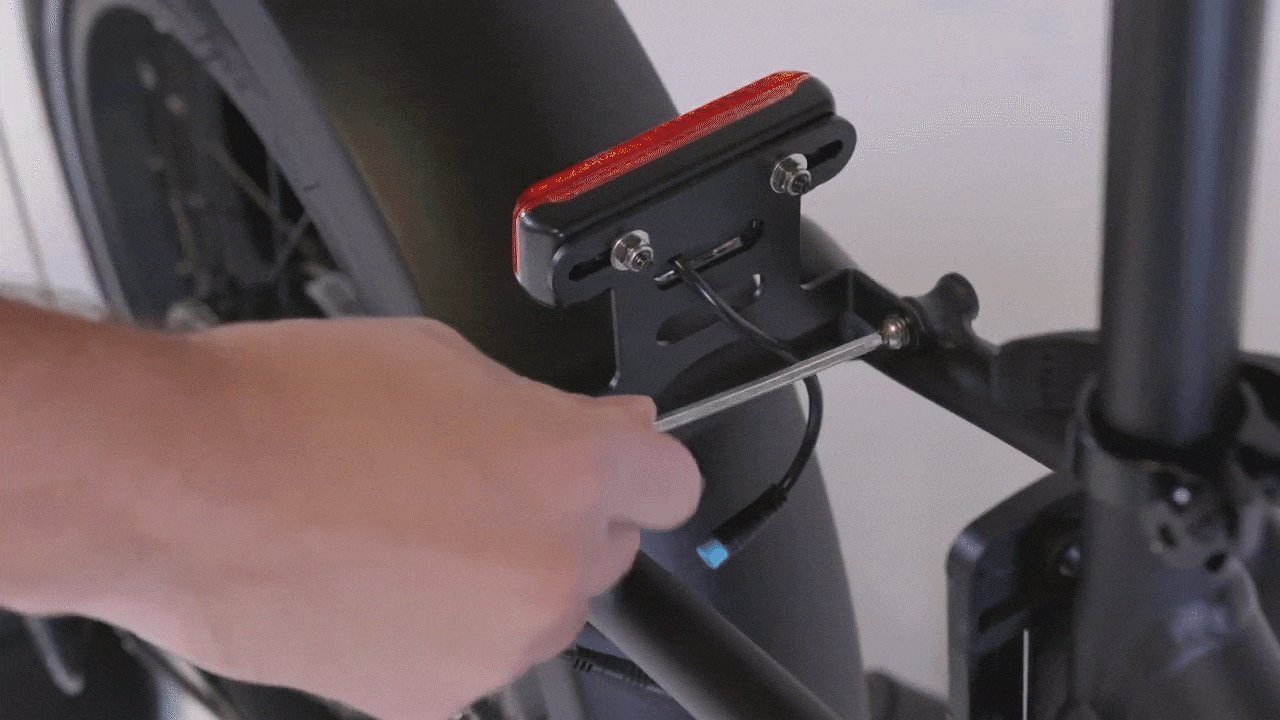
- Remove the taillight from the taillight mounting bracket. Use an 8 mm wrench to remove the locknuts and washers. Set the taillight, locknuts, and washers close by; they will be used to mount the taillight to the built-in mount on the rear rack. Keep the bracket for future use or recycle it according to local rules.
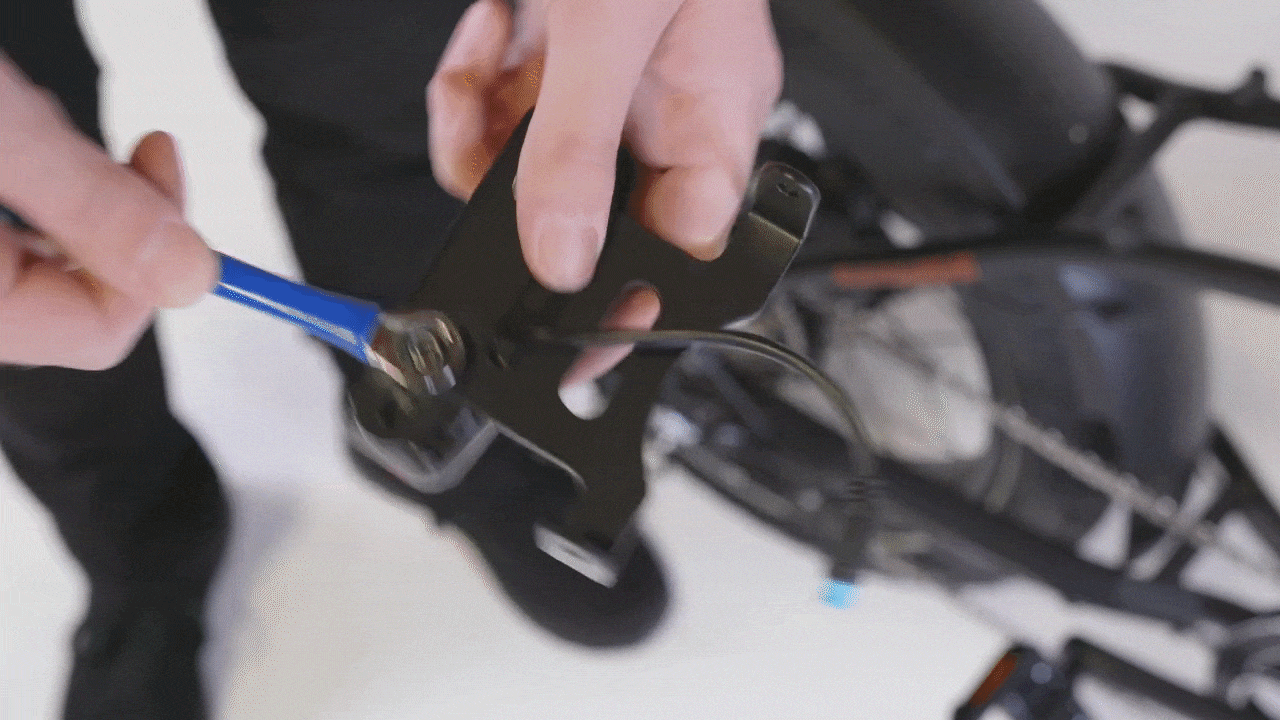
- Secure the taillight to the rear rack. Locate the rear rack, the taillight, and taillight mounting hardware set aside earlier.
- Place the taillight into position on the built-in mount on the rear rack.
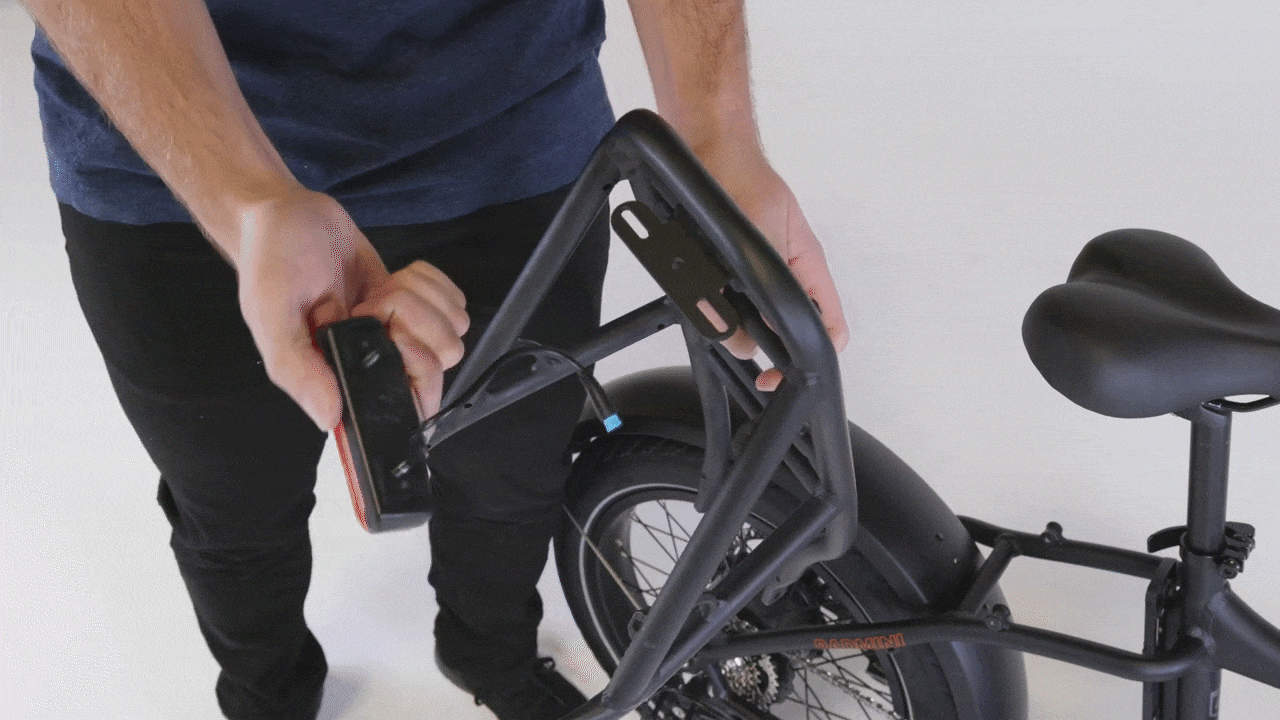
- Install the taillight mounting hardware. On the other side of the mount, pass a washer and locknut onto each bolt end. Thread on the locknuts by hand, then use an 8 mm wrench to tighten the locknuts securely.
.gif?revision=1)
Continue to the next section to install the rear rack on the bike.
- Place the taillight into position on the built-in mount on the rear rack.
- Locate the four rear rack mounting bolts, two flat washers, and two locknuts included in the kit. Two bolts are slightly thicker and will be used to mount the bottom of the rear rack to the seatstay.
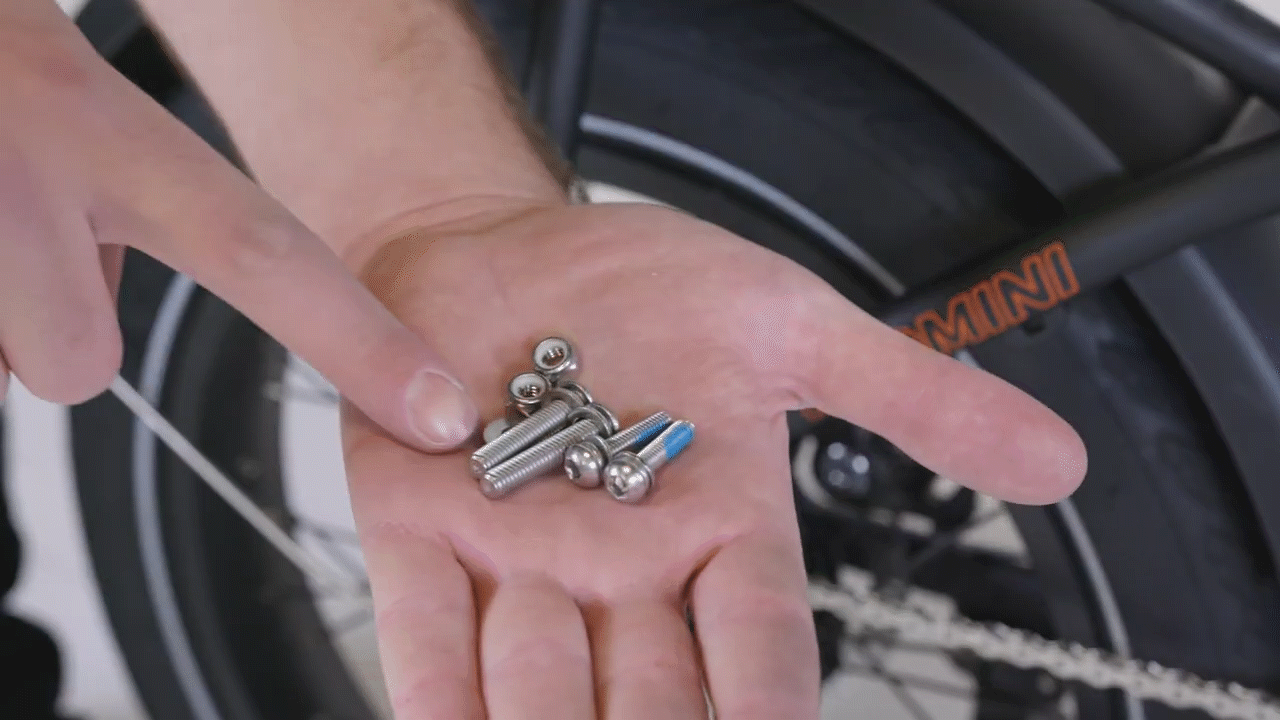
- Place the rack into position so the lower mounting holes align with the outside mounting points on the seatstay and the upper holes align with the inside of the frame. Adjust the fender by hand, if needed.
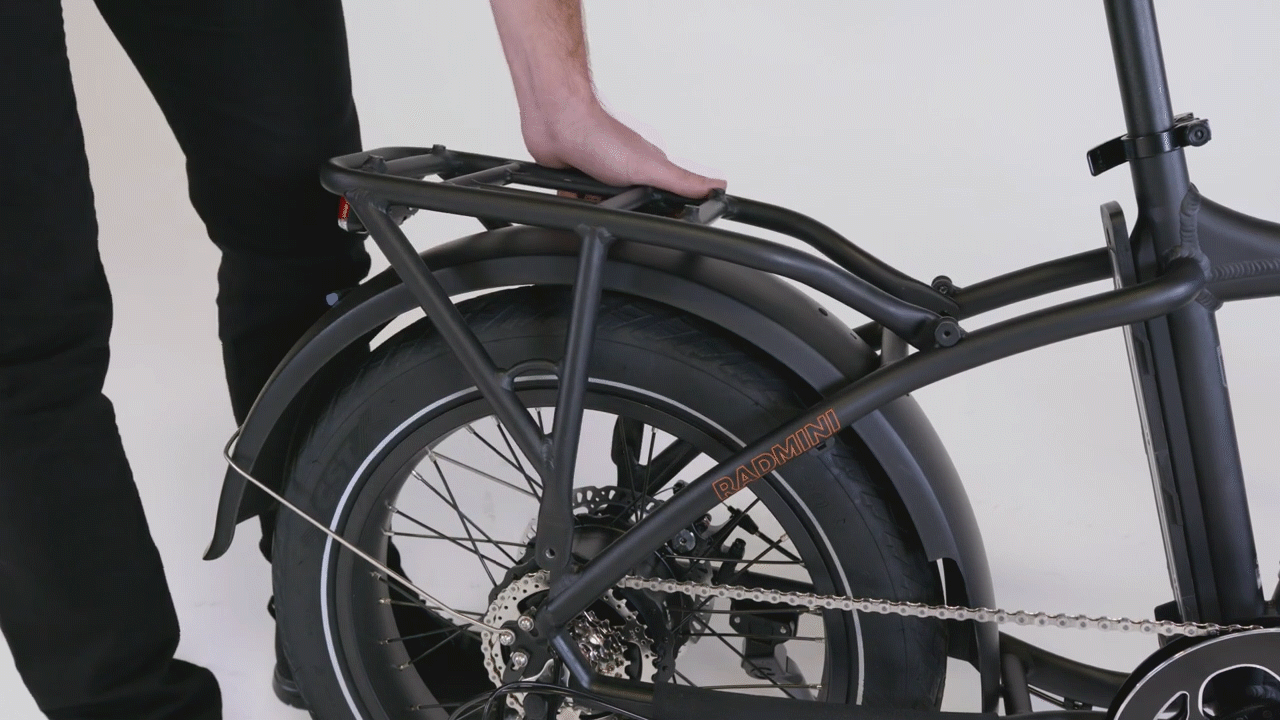
- Loosely secure the rear rack to the lower mounting points using the two slightly thicker bolts.
- Carefully thread a bolt through the rear rack mounting hole and into the seatstay mounting hole partway, by hand. If needed, use a 4 mm Allen wrench to help install the bolt partway. Press the tool into the bolt head fully and turn the bolt slowly to prevent damaging the bolt head.
Tip
Tightening only partway will help make it easier to align and thread the other three bolts into their mounting points. A small amount of resistance is normal, but take your time and make sure you don’t cross-thread the bolts or damage the threads in the frame.
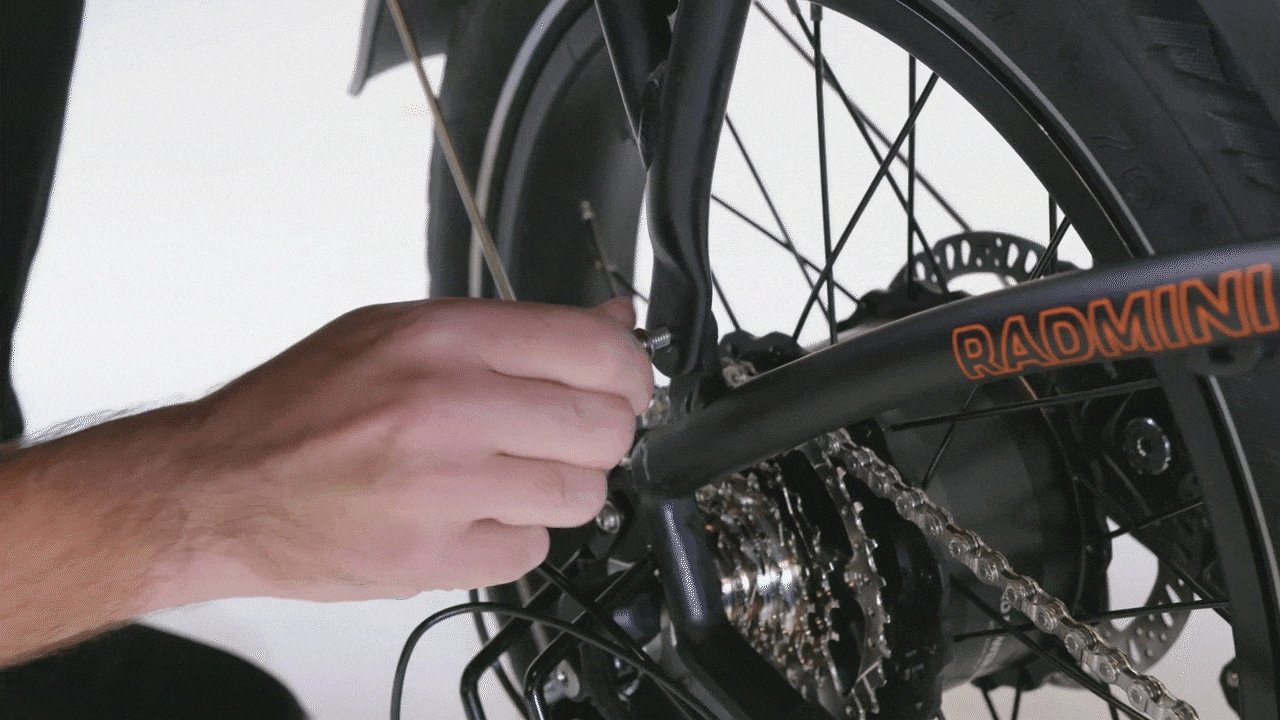
-
Repeat with the other slightly thicker bolt on the other seatstay. Leave the bolt loosely secured for now.
- Carefully thread a bolt through the rear rack mounting hole and into the seatstay mounting hole partway, by hand. If needed, use a 4 mm Allen wrench to help install the bolt partway. Press the tool into the bolt head fully and turn the bolt slowly to prevent damaging the bolt head.
- Loosely secure the rear rack to the upper mounting points using the two remaining bolts.
- Line up the mounting holes on the rack and the bike frame and install the bolts. Carefully thread a bolt partway through the rear rack mounting hole and into the frame mounting point. If needed, use a 4 mm Allen wrench to help install the bolt partway. Press the tool into the bolt head fully and turn the bolt slowly to prevent damaging the bolt head.
Tip
Tightening only partway will help make it easier to align and thread the other three bolts into their mounting points. A small amount of resistance is normal, but take your time and make sure you don’t cross-thread the bolts or damage the threads in the frame.
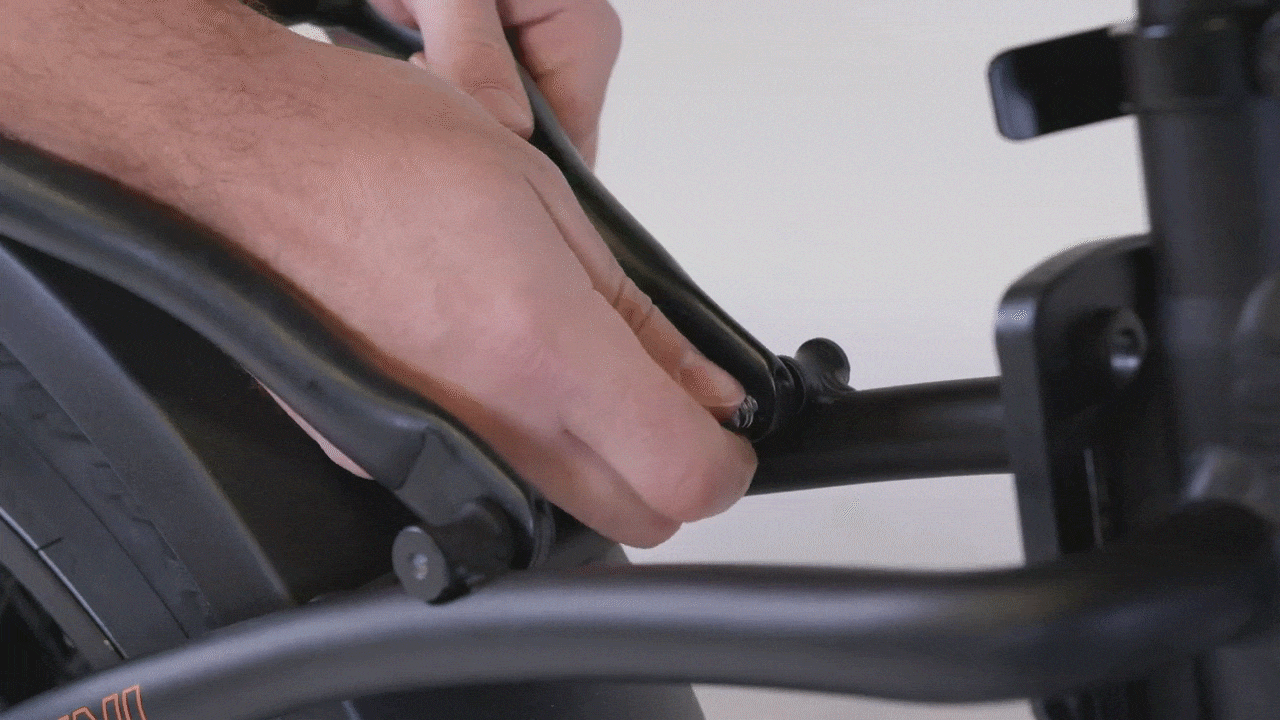
- Repeat with the last bolt. Leave the bolt loosely secured for now.
- Hold the rack in alignment with the mounting point, and at the same time, use a 4 mm Allen wrench to tighten each of the top bolts about three full turns, alternating between the two bolts to tighten them evenly.
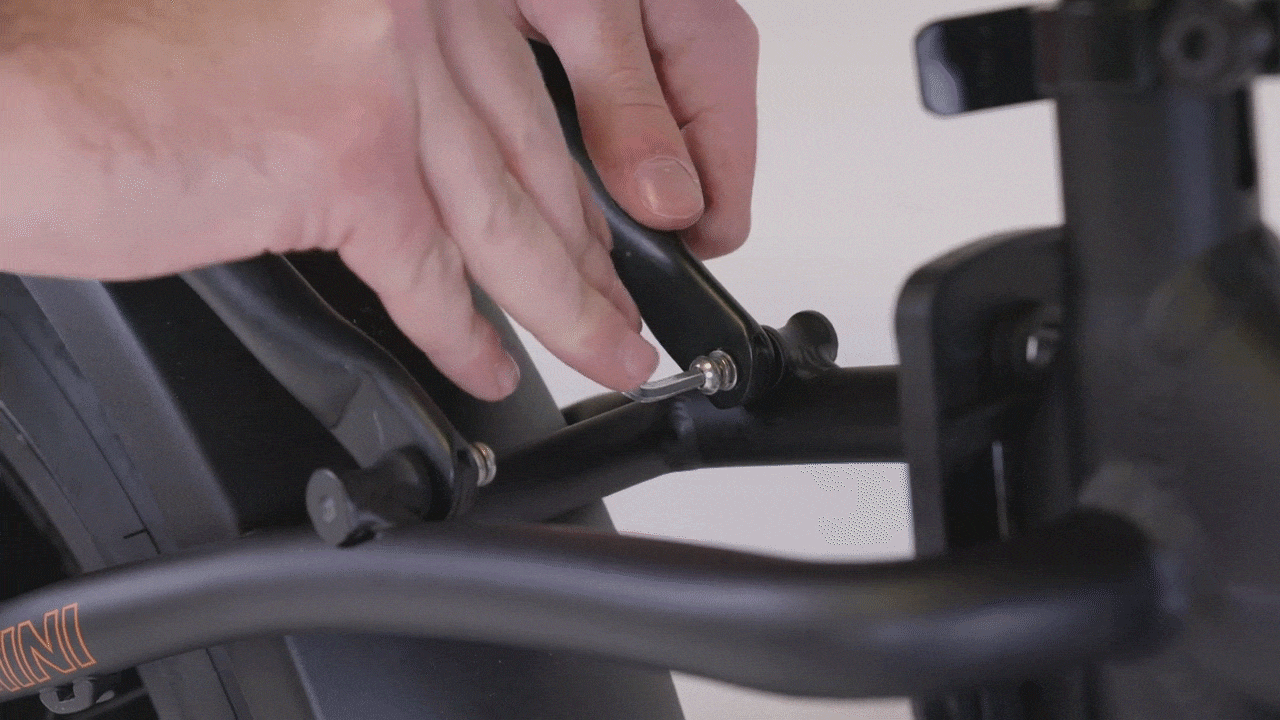
- Line up the mounting holes on the rack and the bike frame and install the bolts. Carefully thread a bolt partway through the rear rack mounting hole and into the frame mounting point. If needed, use a 4 mm Allen wrench to help install the bolt partway. Press the tool into the bolt head fully and turn the bolt slowly to prevent damaging the bolt head.
- Tighten all four mounting bolts fully.
- Thread in the lower bolts fully. On the lower mounting bolts, use a 4 mm Allen wrench to thread in each bolt fully. Pass a washer and a locknut onto each bolt end. Use an 8 mm wrench on the locknut and a 4 mm Allen wrench on the bolt head and tighten each bolt fully.
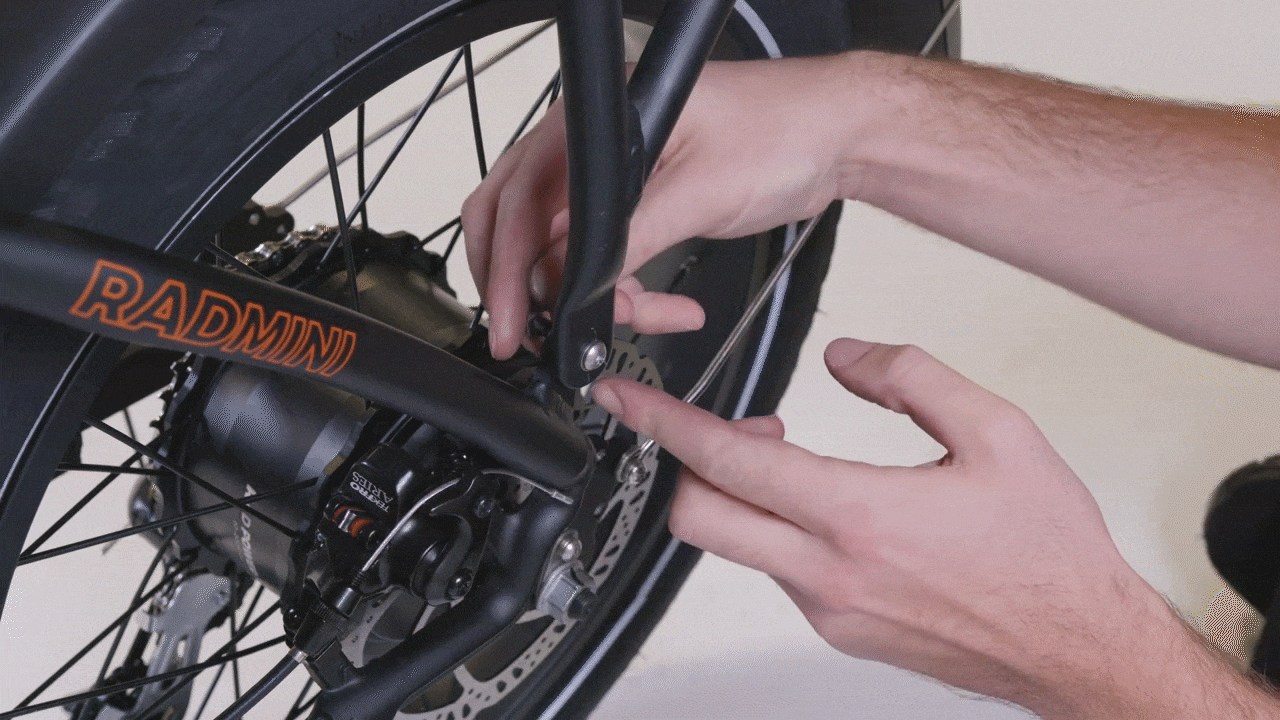
- Torque the upper and lower mounting bolts to 7 Nm.
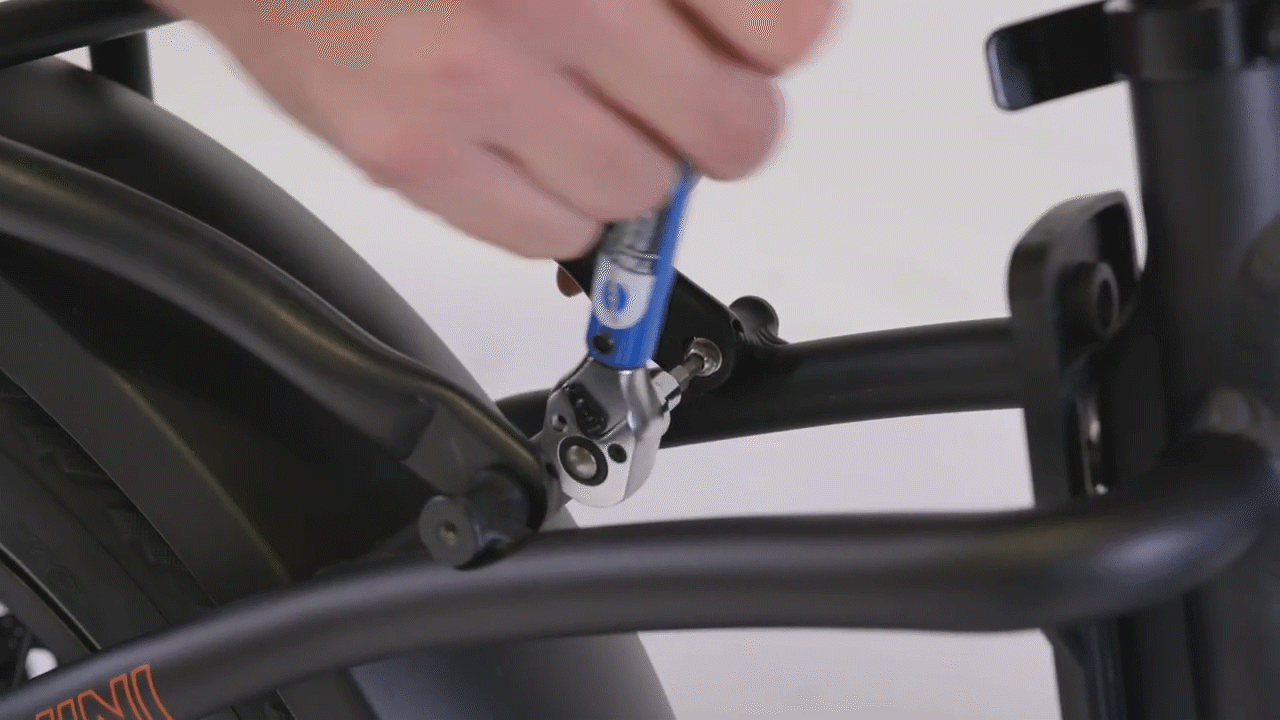
- Thread in the lower bolts fully. On the lower mounting bolts, use a 4 mm Allen wrench to thread in each bolt fully. Pass a washer and a locknut onto each bolt end. Use an 8 mm wrench on the locknut and a 4 mm Allen wrench on the bolt head and tighten each bolt fully.
- Plug in the taillight connector.
- Route the taillight cable along the outside of the bike frame, as shown, to make sure the cable does not interfere with the freewheel or wheel when the bike is in motion.
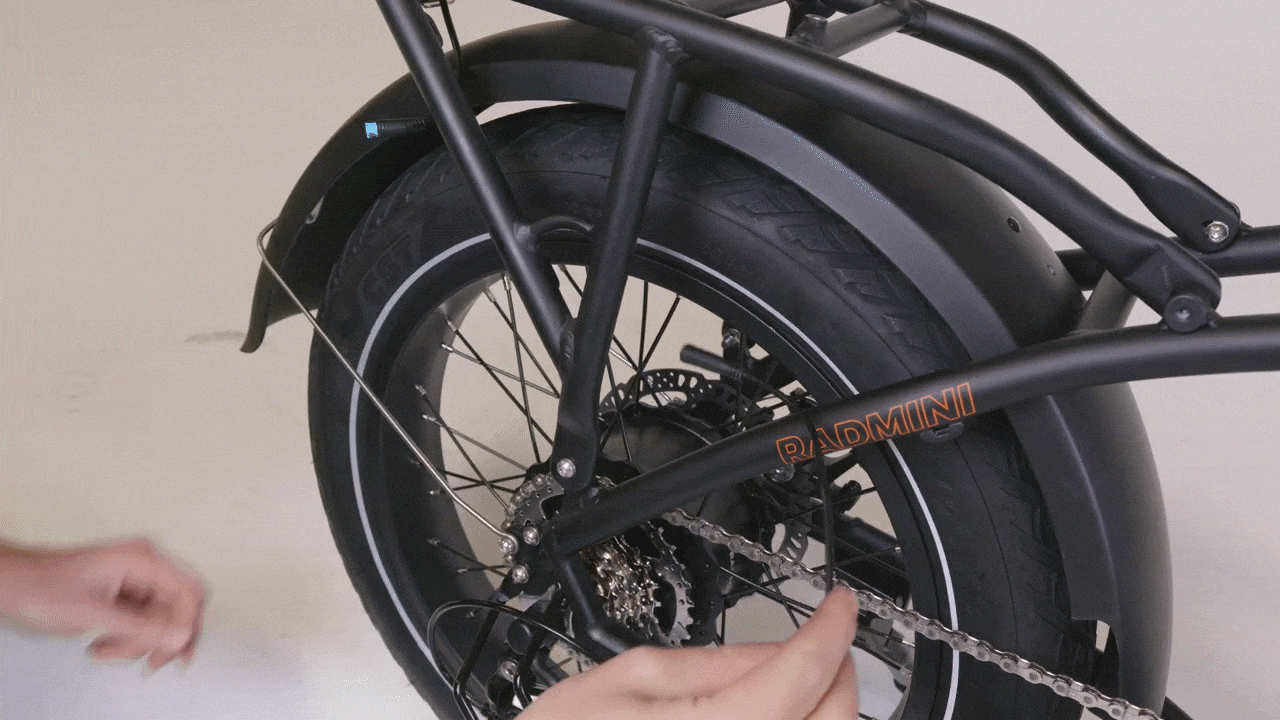
- Plug in the connector end to the connector coming out of the taillight. Line up the internal notch and pins, and external arrows, and press each side directly together, without twisting, to connect. Use the taillight extension cable, if needed.
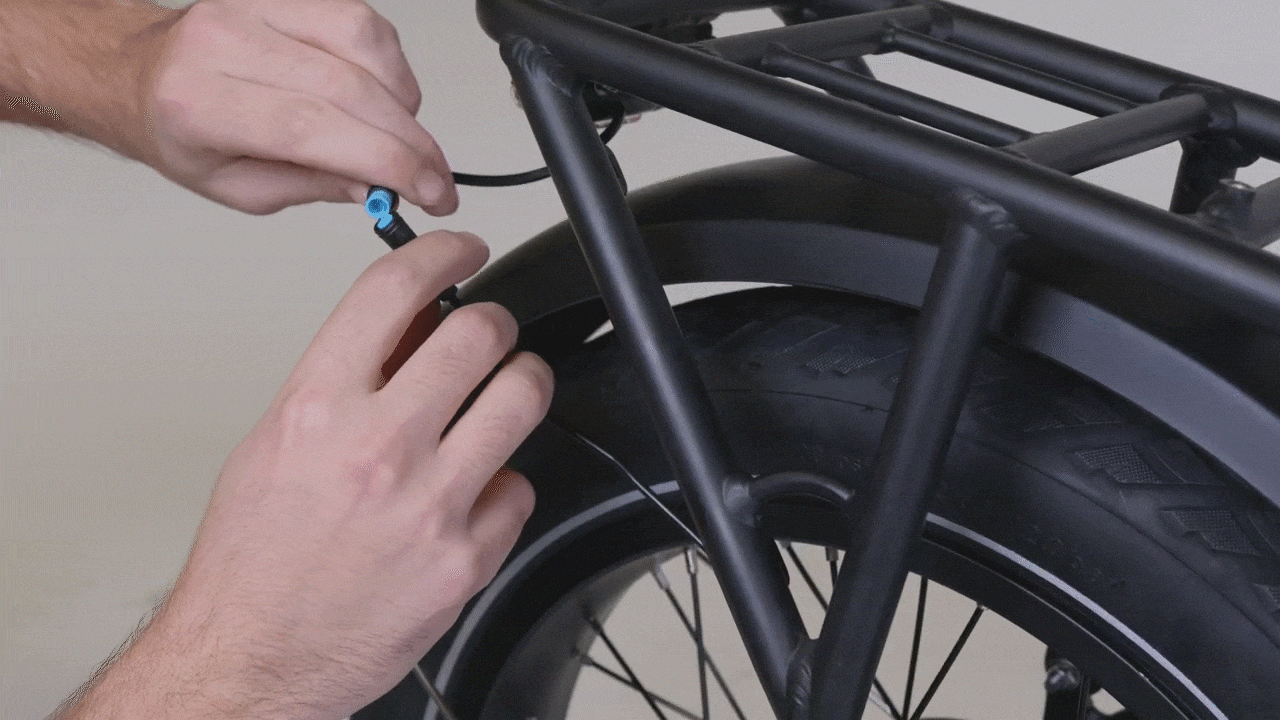
- Route the taillight cable along the outside of the bike frame, as shown, to make sure the cable does not interfere with the freewheel or wheel when the bike is in motion.
- Zip tie the cable to the cable guides on the rack, making sure the cable is away from moving parts. Keep the cable taut enough to remain clear of the rear wheel spokes, but not so tight the cable could be damaged by over-stretching. Snip zip tie excess to be flush and smooth.

- Reinstall the battery and test the bike fully before riding.
